


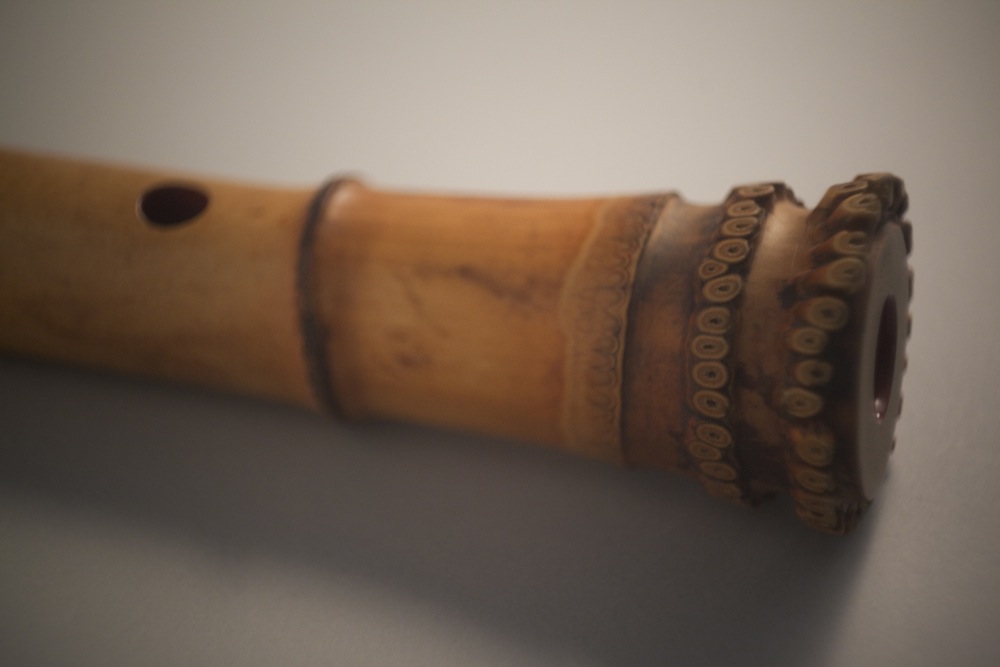
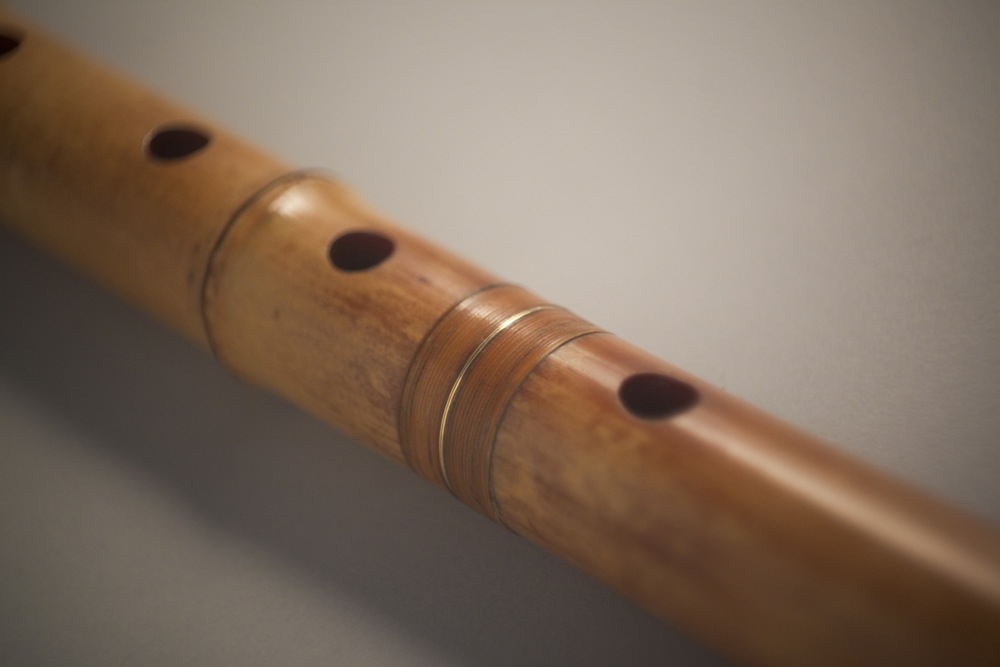
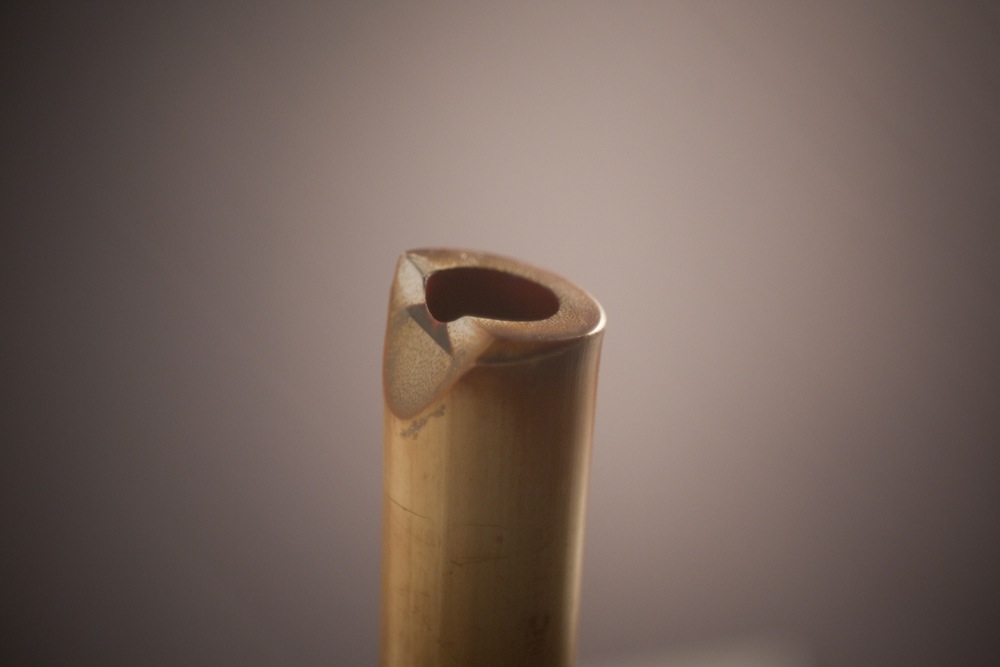
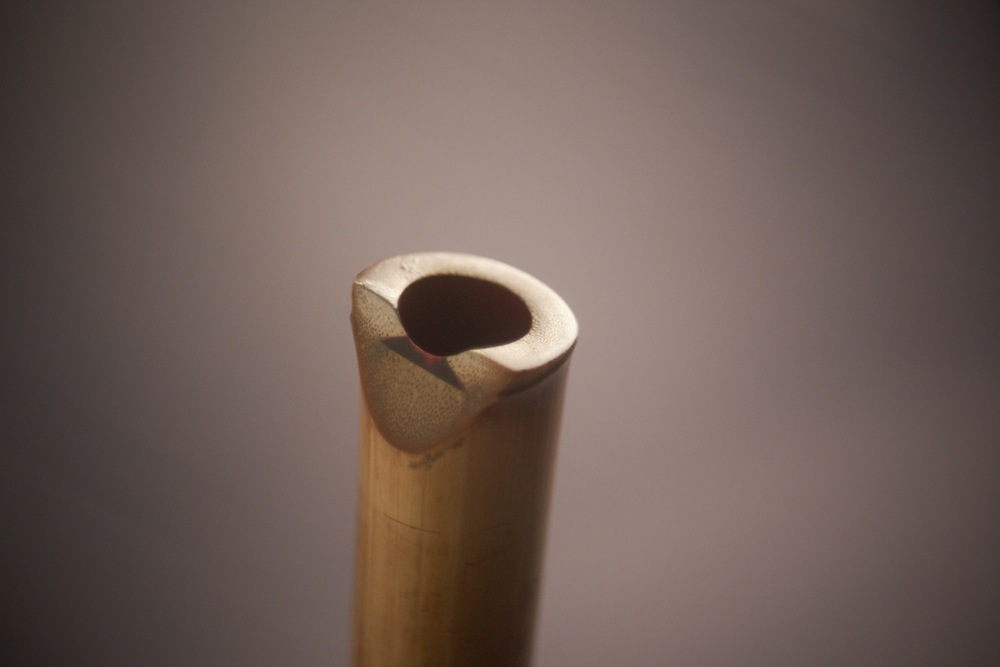
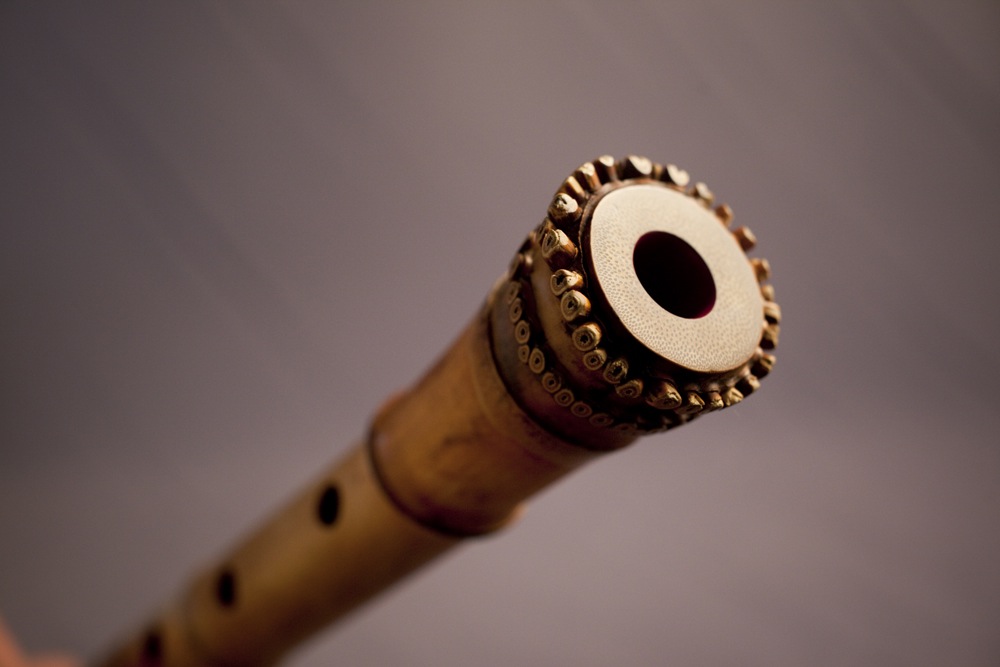
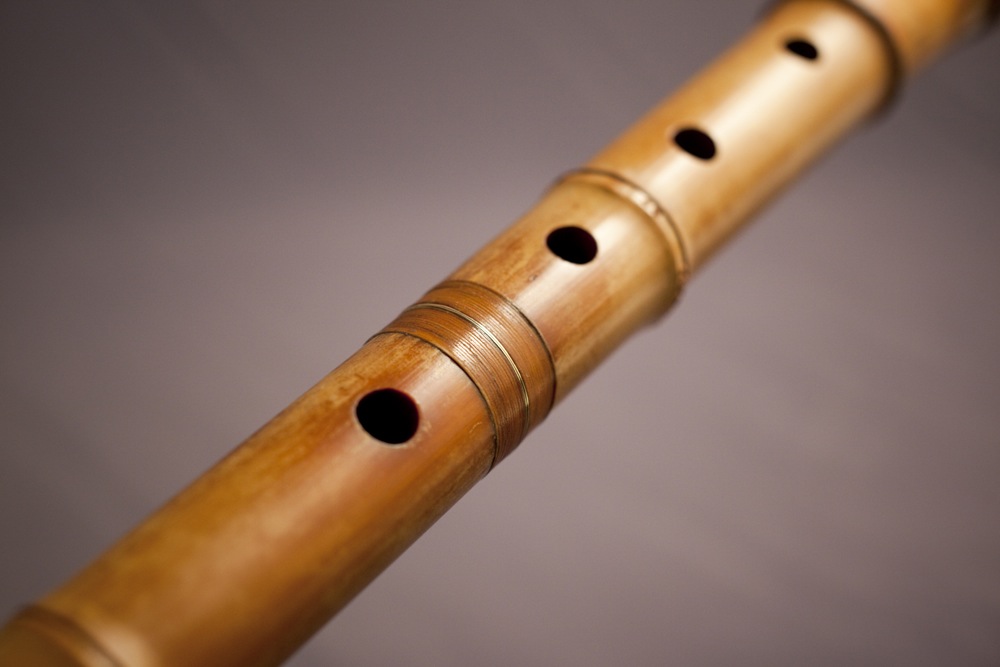
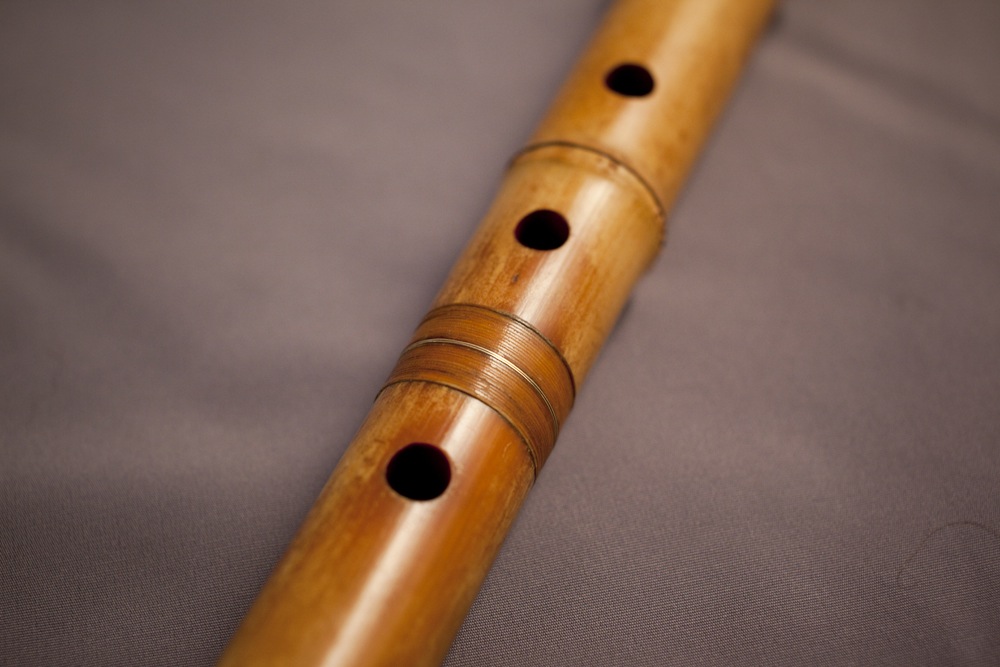

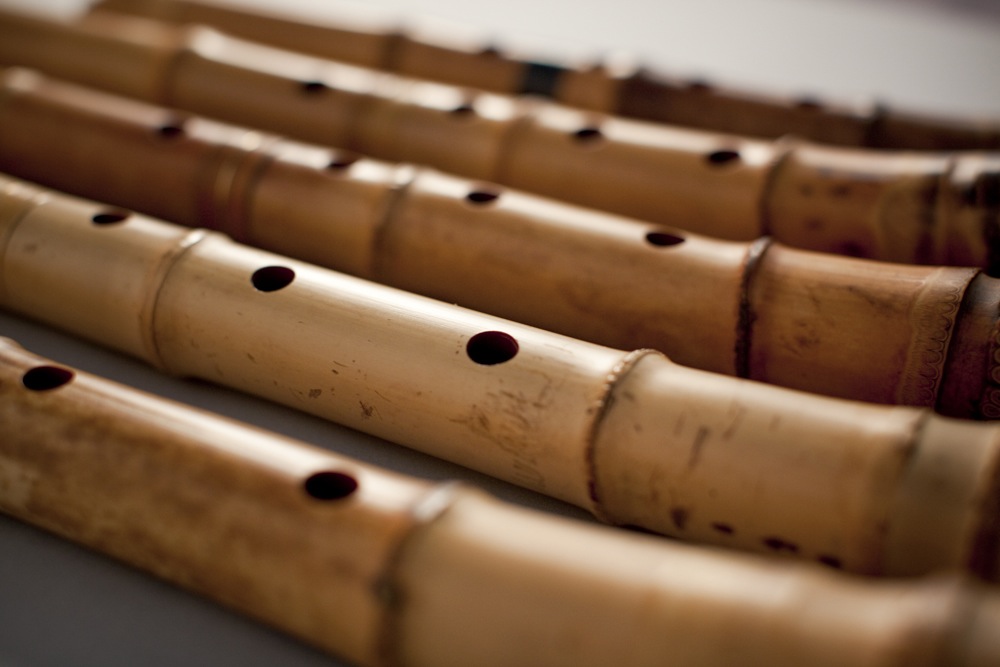
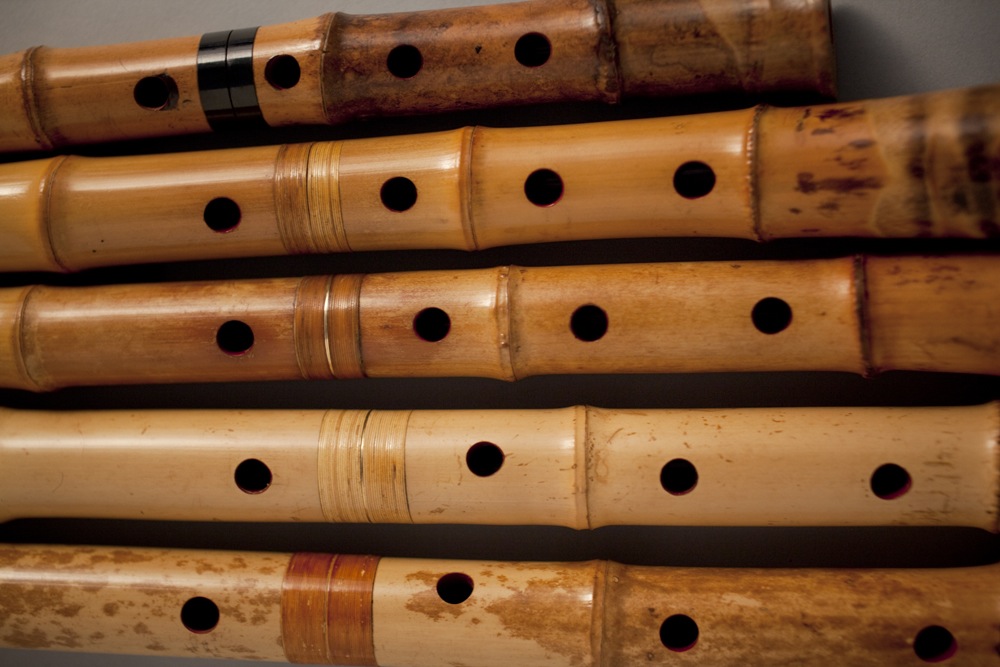
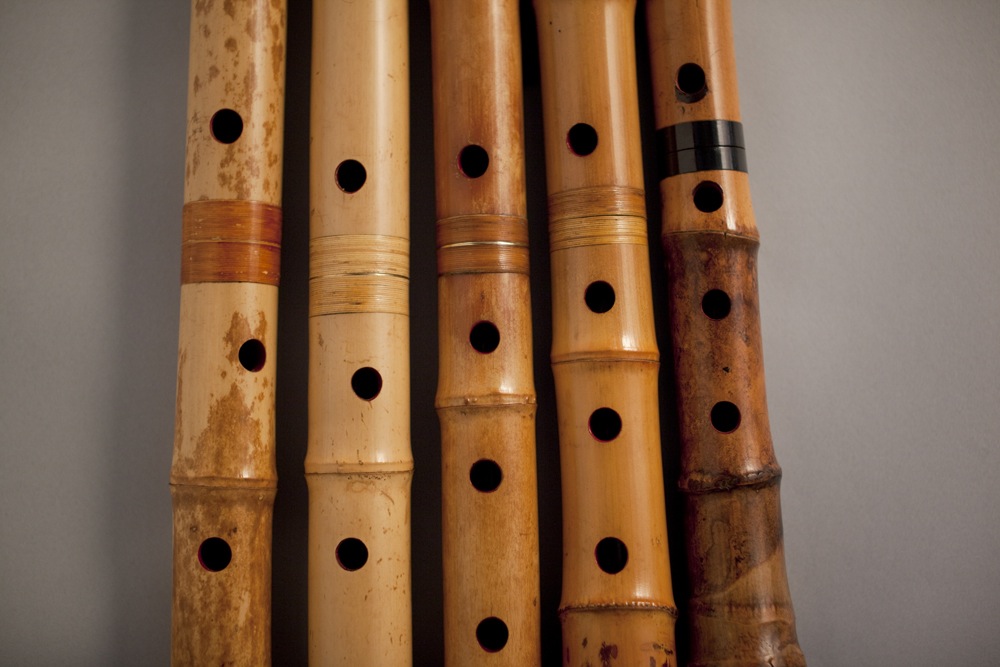
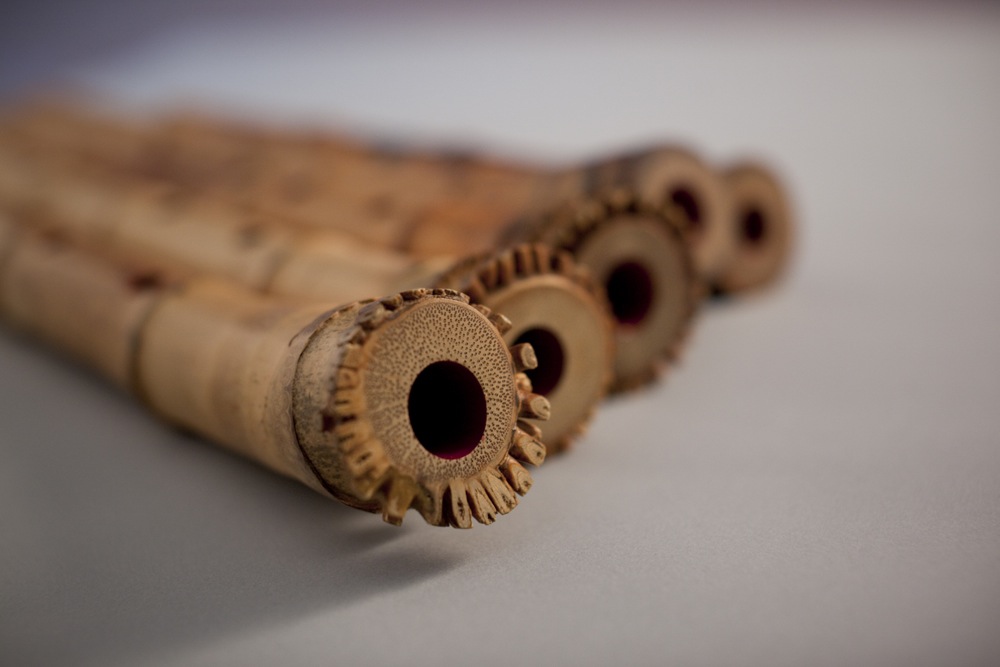















A type of bamboo flute, named after its basic length of one shaku and eight sun (about 55cm). In China there is a vertical flute called a dongxiao (in Japanese, tōshō or dōshō), and in ancient times a six-hole flute with the name shakuhachi was introduced and used in the gagaku court music genre, but later fell out of use.
The modern shakuhachi originated more recently (in the Edo period) from the five-hole fuke shakuhachi used in monastic training by a type of buddhist monk called a komusō. Unlike a recorder, the mouthpiece has no mechanism for directing the flow of air, so the embouchure and blowing angle must be correct in order to produce sound. From the number of finger holes, it would seem that only a pentatonic scale would be possible, but by covering holes halfway or changing the blowing angle, it is possible to produce not only any scale, but also a variety of timbres, including noise-like effects.
During the Edo period, the only offically recognized pieces were solos called honkyoku, which were used for monastic training, but from the Meiji period onwards, ensembles with koto and shamisen became popular and are called sankyoku (trio) ensembles.
In addition to the basic length of one shaku and eight sun, instuments of various lengths are built, and a difference of one sun changes the pitch by roughly a semitone.



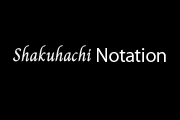
Performance and Explanation by Yamaguchi Kenji
※ When musical notation is used in each episode, it is written in absolute pitch.
composer unknown, date of composition unknown
A classic piece in the fuke honkyoku genre. In the Edo period, the shakuhachi was played by buddhist monks called komusō, who had temples all over the country. This piece was handed down within the tradition of the Myoanji Temple in the sanjo (third ward) of Echigo (now Niigata Prefecture), and is a difficult piece that makes use of special playing techniques. It is played on an instrument with a length of two shaku and four sun, a perfect fourth lower than the standard.
composer unknown, year of composition unknown
A honkyoku of the Kinko School. One of the most famous pieces among shakuhachi classical honkyoku (traditional solo pieces). Originally a duet, it is said to depict the sound of two deer crying out to each other, but in this video it is played as a solo.
Fukuda Randō (1905-1976), composed in 1933
This composer is known for composing the music to the radio drama Fuefuki Dōji, but he was also known as a shakuhachi performer. This piece was inspired by the image of an improvisation he had while gazing at the moon.
Ryōhei Hirose (1930-2008), composed in 1973
This composer, along with Moroi Makoto and Takemitsu Tōru, has left us with works for Japanese instruments using contemporary techniques. This piece consists of six movements and uses innovative compositional techniques such as playing fragmented musical motifs at will. The title references a legend in which sal trees symbolize the Buddha's dying and entering Nirvana.